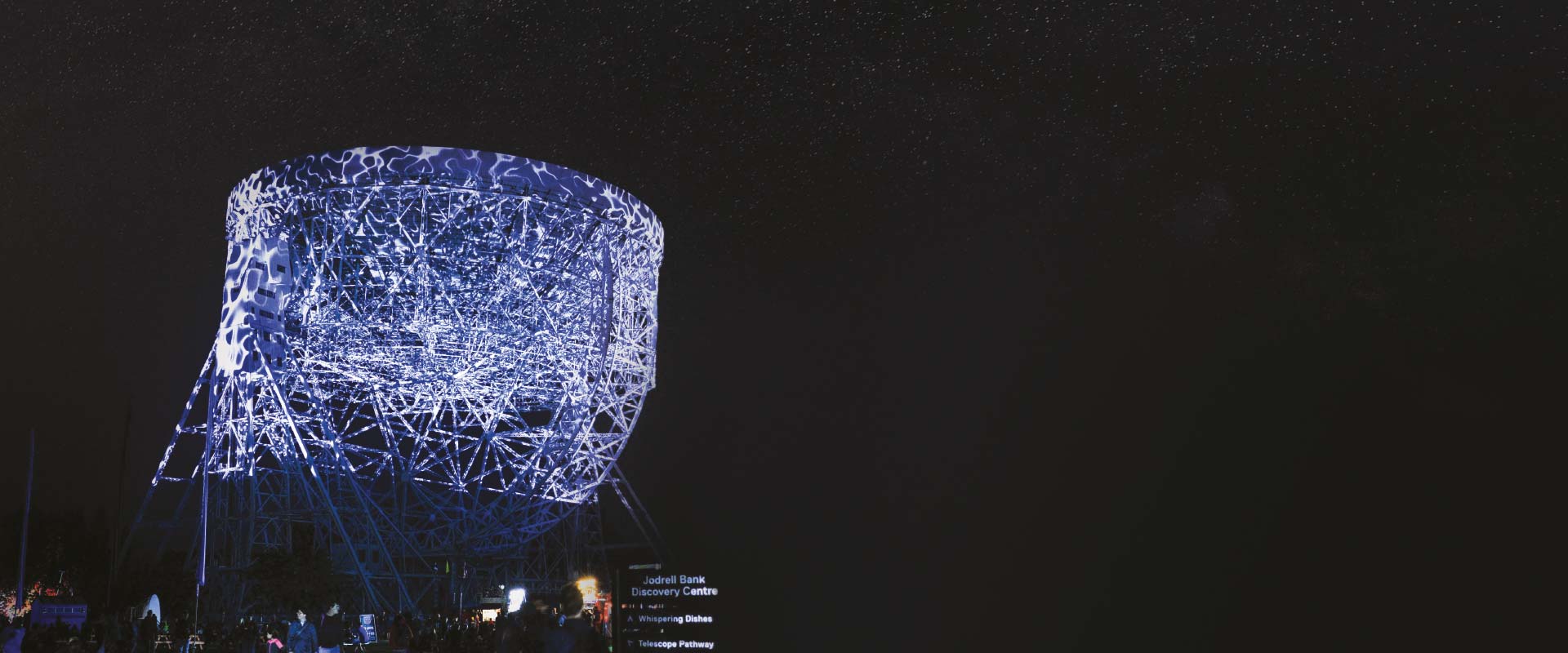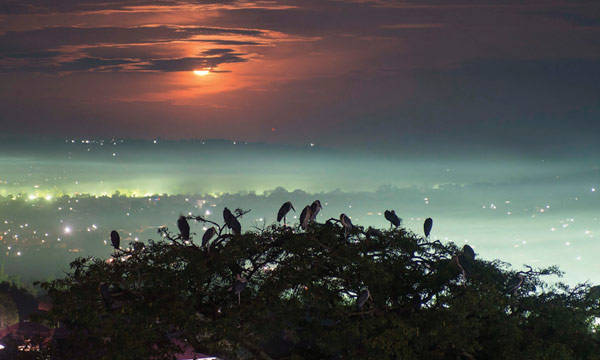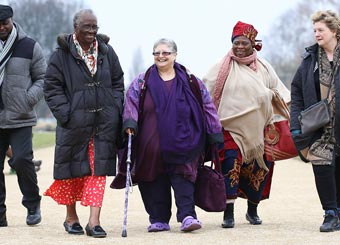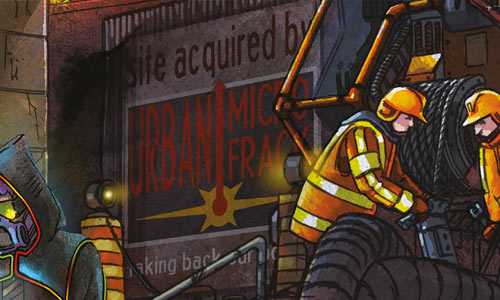Dress up as a dalek. Eat at The Restaurant at the End of the Universe. Experience a light show controlled from deep space. Listen to stellar acts like Orbital and The Moonlandingz. Dream of distant galaxies under the watchful eye of the magnificent Lovell Telescope.
The bluedot festival brings new meaning to the concept of dancing under the stars.
In a 1994 lecture, the astrophysicist Carl Sagan famously described Earth as a "pale blue dot", a "very small stage" in the "vast cosmic arena" of the universe. "Look again at that dot. That's here. That's home. That's us," he marvelled.
"On it everyone you love, everyone you know, everyone you ever heard of, every human being who ever was, lived out their lives … on a mote of dust suspended in a sunbeam."
Professors Teresa Anderson and Tim O’Brien are deeply moved by the possibilities this sentiment presents. They’ve not only dedicated their careers to furthering human knowledge of the universe, but they also have a deep personal connection with, and belief in, the world view that Carl Sagan describes.
Professor Anderson explains: "Tim and I had the pale blue dot passage read at our wedding. It’s pretty much our life philosophy – making the most of humanity and creativity – because it’s only us in the vastness of space. It’s something we both feel very passionate about and it’s very personal to us."
Creating a vast cosmic arena
As Director of the Jodrell Bank Discovery Centre and Associate Director of Jodrell Bank Observatory respectively, Professors Anderson and O’Brien were perfectly placed to work alongside the team at Manchester’s From the Fields to deliver bluedot festival – a physical manifestation of Sagan’s philosophy of a marriage between science and the arts.
"To date, the relationship between science and art has been dominated by art using science as raw material," says Professor Anderson. "But science is creative too, and people often forget that. We wanted to be holistic about creativity, and demonstrate how science could be central to that creativity."
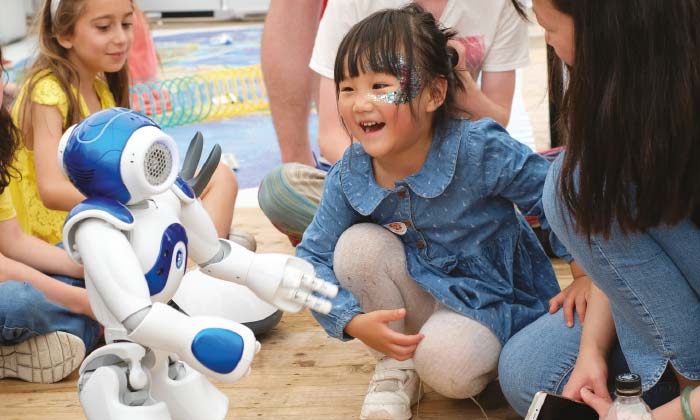
Nothing demonstrates the creative possibilities of science more dramatically than the COSMOS residency at bluedot 2017 by the Japanese programmer and DJ, Daito Manabe. He transformed live data received by the Lovell Telescope into a spectacular light and sound show, projected back on to the telescope in real time.
Ruth McCullough, Senior Producer at Abandon Normal Devices, was instrumental in the success of COSMOS. Describing the ambitions of the residency, she says: "We’ve always wanted to do something that digs deeper into the research they’re doing at Jodrell Bank and use live data from that research in creative and unexpected ways.
"We’ve projected on to the telescope dish before, which is an amazing canvas for artists, but the idea of projecting onto the structure using live data enabled quite a deep and thoughtful meditation: an opportunity for the audience to think about their position in the universe."
Making science more accessible is a fundamental objective of bluedot festival, and this interactive installation certainly brought the cosmos down to Earth.
“Festivalgoers were able to manipulate the live data by turning dials in an interactive interface designed by the artist, helping them to understand their relationship to this data and its impact on the sound and visuals here on Earth,” says Ruth.
Science on the big stage
The audience reaction has been palpable. Daisy Ray, a PhD researcher in nuclear energy, exhibited the work of the University’s Dalton Nuclear Institute at bluedot. She was struck by the crowd’s curiosity and enthusiasm. “The audience was definitely one of the most engaged I’ve seen,” says Daisy. “Children and adults, no matter what their degree of knowledge, wanted to get involved in the activities and were genuinely interested in what we were doing.
I have done outreach at museums and science fairs before but exhibiting at bluedot was a truly unique experience.
"I have done outreach at museums and science fairs before but exhibiting at bluedot was a truly unique experience. People were there to have a good time, but they weren’t just there for the fantastic music – they wanted to learn, and were obviously enjoying themselves through science, which was great to see."
It’s clear that bluedot exudes a rather special atmosphere. Its success is the result of a perfectly curated constellation of factors, making it a festival that is, in more ways than one, out of this world.
Professor Anderson explains: "The fact that we’ve got the iconic Lovell Telescope – the ‘Stonehenge of science’ – as well as being part of The University of Manchester, a world-leading research institution – gives us the edge on everywhere else. We’ve got this integrity that few other science sites have.
"We’re also committed to the theme at every single level, from the headline music acts to the words we use to talk about it. If you keep that theme in mind with every detail, you get something that rings true, and people value that."
Through an unwavering dedication to Sagan’s philosophy, bluedot festival brings inquisitive minds together to delight in the wonders of the universe, and to dance under the stars.
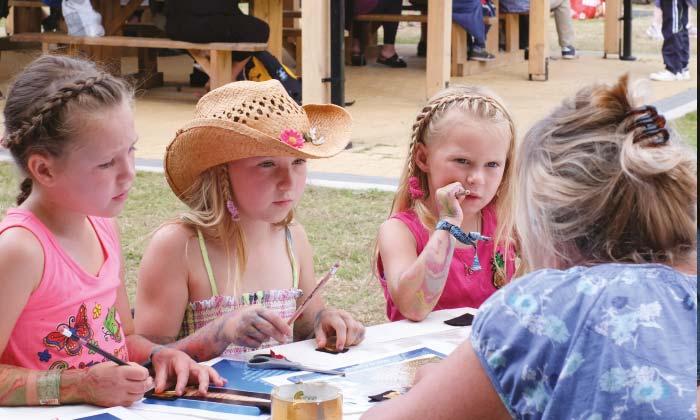
Tickets for bluedot festival 2018 are on sale now at: www.discoverthebluedot.com
Learn more at: http://www.jodrellbank.net/

